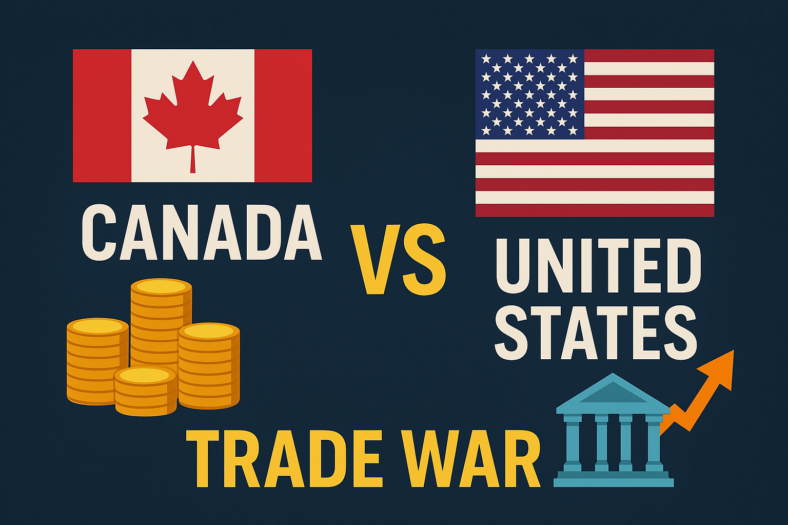In Canada, guarantor loans have become an increasingly popular option for those looking to secure funds for various purposes, such as debt consolidation, home improvements, or unexpected expenses. This comprehensive guide aims to provide detailed information on how to get a guarantor loan in Canada, ensuring you understand the entire process from start to finish.
Whether you are a prospective borrower or someone considering becoming a guarantor, this guide will cover everything you need to know. We will explore the basics of guarantor loans, eligibility criteria, the application process, benefits and risks, and tips for finding the right lender. By the end of this guide, you should have a clear understanding of how to successfully navigate the guarantor loan process in Canada and make informed financial decisions.
Best Loans in Canada
What is a Guarantor Loan
A guarantor loan is a type of unsecured loan that requires a third party – the guarantor – to co-sign the loan agreement and take responsibility for the loan repayments if the primary borrower is unable to meet their obligations. This financial product is designed to help individuals who may have difficulty securing a loan on their own due to factors such as poor credit history, lack of credit history, or insufficient income.
Key Characteristics of a Guarantor Loan
Third-Party Guarantee: The most distinctive feature of a guarantor loan is the involvement of a guarantor. This person, usually a family member or close friend, agrees to repay the loan if the borrower defaults. This reduces the lender’s risk and makes them more willing to offer the loan.
Unsecured Loan: Unlike secured loans, guarantor loans do not require collateral such as property or other assets. Instead, the guarantor’s promise to repay serves as the security for the loan.
Credit Accessibility: Guarantor loans are particularly beneficial for those who might struggle to get approved for a standard loan. This includes individuals with poor credit scores, no credit history, or those with low incomes.
Loan Amounts and Terms: The amount you can borrow with a guarantor loan and the terms of repayment (such as interest rates and loan duration) can vary widely depending on the lender and the financial profiles of both the borrower and the guarantor.
Improved Loan Terms: Because the guarantor reduces the lender’s risk, borrowers may be able to secure more favorable loan terms than they would be able to on their own. This can include lower interest rates and higher loan amounts.
How Guarantor Loans Work
Application Process: The borrower applies for the loan, and as part of the application, they must nominate a guarantor. Both the borrower and the guarantor typically need to provide personal and financial information to the lender.
Guarantor’s Role: The guarantor undergoes a credit check and must demonstrate their ability to cover the loan repayments if necessary. This often means having a stable income and a good credit score.
Loan Approval and Disbursement: Once the lender is satisfied with the creditworthiness of both the borrower and the guarantor, the loan is approved, and funds are disbursed to the borrower.
Repayment: The borrower makes regular repayments as per the loan agreement. If the borrower misses payments, the lender will contact the guarantor to fulfill the repayment obligations.
Credit Reporting: Both the borrower’s and guarantor’s credit scores can be affected by the repayment performance. Timely repayments can improve the borrower’s credit score, while missed payments can negatively impact both parties’ credit histories.
Benefits of Guarantor Loans
Access to Credit: They provide an opportunity for individuals with poor or no credit history to access funds that they might not otherwise be able to obtain.
Credit Improvement: Successfully repaying a guarantor loan can help the borrower build or rebuild their credit history, making future borrowing easier and potentially on better terms.
Flexible Usage: Borrowers can use the funds for various purposes, including debt consolidation, home improvements, education expenses, or unexpected emergencies.
Favorable Terms: With the guarantor’s backing, borrowers may receive better interest rates and loan terms than they would on their own.
Risks of Guarantor Loans
Financial Strain on Guarantor: If the borrower defaults, the guarantor must take over the loan repayments, which can put significant financial strain on them.
Credit Impact: Missed payments can negatively affect the credit scores of both the borrower and the guarantor.
Relationship Strain: Financial issues can cause stress and strain relationships between the borrower and the guarantor, particularly if there are difficulties in meeting repayment obligations.
Legal Obligations: The guarantor is legally bound to the loan agreement, and failure to repay can lead to legal action and damage to their financial reputation.
What are the requirements for getting a loan with a guarantor in Canada
Obtaining a loan with a guarantor in Canada involves meeting specific criteria set by lenders. These requirements ensure the borrower and the guarantor are financially capable of repaying the loan. Here are the common prerequisites for securing a guarantor loan in Canada:
For Borrowers:
Age: Borrowers must typically be at least 18 years old, though some lenders may require a higher minimum age.
Canadian Residency: Borrowers must be Canadian residents with a valid address in Canada.
Income Verification: Borrowers need to demonstrate a stable source of income to repay the loan. This may include pay stubs, tax returns, or bank statements.
Credit History: While guarantor loans are often available to individuals with poor or no credit history, some lenders may still assess the borrower’s creditworthiness. A credit check may be conducted to evaluate the borrower’s financial history.
Loan Purpose: Borrowers should specify the purpose of the loan, whether it’s for debt consolidation, home improvements, education expenses, or other legitimate needs.
Capacity for Repayment: Lenders assess the borrower’s ability to repay the loan based on their income, expenses, and existing financial commitments.
For Guarantors:
Good Credit Score: Guarantors typically need a strong credit history to reassure the lender of their ability to repay the loan if the borrower defaults. A credit score above a certain threshold, often considered “good” or “excellent,” is preferred.
Stable Income: Guarantors should have a reliable and sufficient income to cover the loan repayments if required. This ensures they can fulfill their obligations in the event the borrower is unable to repay.
Canadian Residency: Similar to borrowers, guarantors must be Canadian residents with a valid address in Canada.
Legal Capacity: Guarantors must have the legal capacity to enter into a contract. This typically means being of legal age and mentally competent.
Understanding of Responsibilities: Guarantors should fully understand the responsibilities and risks involved in guaranteeing the loan. They should be willing to take on the financial obligation if the borrower defaults.
Additional Requirements:
Documentation: Both the borrower and the guarantor must provide various documents during the application process, including identification (such as a passport or driver’s license), proof of address, income verification, and sometimes credit reports.
Agreement Signing: Both parties must sign a guarantor agreement or contract, outlining the terms and conditions of the loan and the responsibilities of the borrower and the guarantor.
Loan Amount and Terms: The loan amount and terms, including interest rates, repayment schedule, and loan duration, may vary depending on the lender and the financial profiles of both parties.
Lender’s Criteria: Each lender may have specific eligibility criteria and requirements, so it’s essential to check with individual lenders to understand their guidelines.
How to find a guarantor
Finding a suitable guarantor is a crucial step in obtaining a loan with a guarantor. Here are some steps you can take to find someone willing to guarantee your loan:
Step 1: Identify Potential Guarantors
Family Members: Consider close family members, such as parents, siblings, or adult children, who may be willing to act as your guarantor.
Friends: Trusted friends who have a stable financial situation and are willing to support you may also be suitable candidates.
Relatives: Extended family members, such as aunts, uncles, or grandparents, may be willing to help if they have a good relationship with you and are financially stable.
Step 2: Discuss Responsibilities and Risks
Before approaching potential guarantors, ensure you fully understand the responsibilities and risks involved. Have an open and honest conversation with them about:
- The purpose of the loan
- The loan amount and terms
- Their role as a guarantor, including the legal and financial obligations
- The potential impact on their credit score if you fail to repay the loan
Step 3: Choose Someone Financially Stable
Select a guarantor who has a stable income, a good credit history, and is financially capable of covering the loan repayments if needed. This will reassure the lender and increase the likelihood of loan approval.
Step 4: Approach Potential Guarantors
Once you’ve identified potential guarantors, approach them respectfully and explain your situation clearly. Provide details about why you need the loan, how much you’re borrowing, and the terms of the loan agreement. Be prepared to answer any questions they may have about their role as a guarantor.
Step 5: Address Concerns and Provide Assurance
Understand that some individuals may have reservations about guaranteeing a loan due to the associated risks. Address any concerns they may have and provide assurance that you will make timely repayments. Offer to sign a legally binding agreement that clearly outlines the terms and conditions of the loan and the responsibilities of both parties.
Step 6: Respect Their Decision
Respect the decision of potential guarantors, even if they decline to act as your guarantor. Pressuring or coercing someone into guaranteeing your loan is not advisable and can strain relationships.
Step 7: Consider Alternative Options
If you’re unable to find a guarantor among your family and friends, consider alternative options such as:
Professional Guarantor Services: Some companies specialize in providing guarantor services for a fee. However, be cautious and thoroughly research these services to ensure they are reputable and trustworthy.
Secured Loans: If obtaining an unsecured loan with a guarantor proves challenging, you may consider applying for a secured loan that requires collateral instead.
What happens when you can’t find a guarantor?
When you’re unable to find a guarantor, it can present challenges in obtaining certain types of loans, particularly guarantor loans. However, there are still options available to explore:
1. Explore Alternative Lending Options
Secured Loans: Consider applying for a secured loan that requires collateral, such as a vehicle or property. Since secured loans are backed by assets, they may be easier to qualify for without a guarantor.
Peer-to-Peer Lending: Explore peer-to-peer lending platforms that connect borrowers with individual investors. These platforms may have more flexible lending criteria compared to traditional banks and may not require a guarantor.
2. Build Your Credit Score
- Credit Building: Focus on improving your credit score by making timely payments on existing debts, reducing credit card balances, and addressing any negative marks on your credit report. A higher credit score can increase your chances of qualifying for loans without a guarantor in the future.
3. Consider Financial Assistance Programs
- Government Assistance: Investigate government-sponsored programs or assistance options available to individuals in your situation. These programs may offer financial support or resources to help you meet your needs without requiring a guarantor.
4. Seek Assistance from Nonprofit Organizations
- Nonprofit Lenders: Some nonprofit organizations offer lending programs or financial assistance to individuals who have difficulty accessing traditional loans. These organizations may have more lenient eligibility criteria and could provide an alternative source of funding.
5. Discuss Options with Lenders
- Discuss with Lenders: Speak with lenders directly to discuss your situation and explore any potential alternatives they may offer for individuals without guarantors. Some lenders may have specialized loan products or programs designed for borrowers in similar circumstances.
6. Build a Stronger Financial Profile
Income Stability: Focus on increasing your income or stabilizing your financial situation to improve your chances of qualifying for loans without a guarantor in the future.
Savings and Assets: Accumulate savings or assets that can serve as a financial cushion or collateral for future loan applications.
7. Seek Financial Counseling
- Financial Counseling: Consider seeking guidance from a financial counselor or advisor who can provide personalized advice and assistance in navigating your financial situation and exploring available options.
FAQs – How to get a guarantor loan in Canada
A guarantor loan is a type of unsecured loan where a third party, known as the guarantor, agrees to repay the loan if the primary borrower defaults. This setup provides added security for the lender, making it possible for individuals with poor or no credit history to access funds they might not qualify for otherwise.
Typically, a guarantor in Canada is someone with a stable financial situation and a good credit history. This could be a family member, friend, or trusted individual who is willing to take on the responsibility of guaranteeing the loan repayment if the borrower fails to do so.
Guarantor loans offer several benefits, including access to funds for individuals with poor credit, potentially lower interest rates compared to other bad credit loan options, and the opportunity to rebuild credit by making timely repayments.
Risks include potential damage to the relationship between the borrower and the guarantor if repayments are missed, the guarantor’s financial liability if the borrower defaults, and negative impacts on both parties’ credit scores if payments are not made on time.
Eligibility criteria typically include age requirements, Canadian residency, proof of income, and sometimes a credit check. Both the borrower and the guarantor must meet these criteria set by the lender.
Loan amounts and interest rates vary depending on factors such as the lender, the borrower’s and guarantor’s financial profiles, and the purpose of the loan. It’s essential to compare offers from different lenders to find the most favorable terms.
Research online or consult with financial institutions to find lenders that offer guarantor loans. Consider factors such as interest rates, loan terms, and customer reviews to select a reputable lender.
Documentation typically includes identification, proof of income for both the borrower and the guarantor, proof of Canadian residency, and sometimes credit reports. The specific requirements may vary depending on the lender.
Approval times vary depending on the lender and the completeness of the application. In some cases, approvals can be obtained within a few days, while others may take longer.
Yes, a guarantor loan can be used for debt consolidation, which involves combining multiple debts into a single loan with a potentially lower interest rate. This can make repayments more manageable and simplify your finances.
Yes, applying for a guarantor loan may affect your credit score as the lender will conduct a credit check as part of the application process. However, making timely repayments on the loan can help improve your credit score over time.
If you default on a guarantor loan, the lender may pursue legal action against you to recover the outstanding debt. Additionally, the guarantor may be required to repay the loan on your behalf, which could strain your relationship with them.
Yes, you can usually repay a guarantor loan early, but there may be penalties or fees associated with doing so. It’s essential to review the terms of your loan agreement and consult with your lender to understand any potential costs.
Steps include maintaining a stable income, improving your credit score, providing accurate and complete documentation, and selecting a guarantor with a strong financial background.
Yes, you may still be eligible for a guarantor loan if you are self-employed or have irregular income. However, you may need to provide additional documentation to demonstrate your ability to repay the loan.
If you cannot find a guarantor, you may need to explore alternative lending options or work on improving your financial situation to qualify for a loan independently.
Yes, alternatives include secured loans, peer-to-peer lending, and government-sponsored programs designed to assist individuals with poor credit.
Protect yourself and your guarantor by carefully reviewing the terms of the loan agreement, ensuring you both understand your responsibilities, and maintaining open communication throughout the loan repayment period.
Both borrowers and guarantors have legal rights under Canadian law, including the right to receive clear and accurate information about the loan terms, the right to dispute any unfair practices, and the right to seek legal assistance if needed.
You can find more information and assistance regarding guarantor loans in Canada by consulting with financial advisors, contacting lenders directly, or researching reputable sources online, such as government websites or financial education resources.
Conclusion
Navigating the process of obtaining a guarantor loan in Canada requires careful consideration and thorough understanding of the responsibilities involved for both borrowers and guarantors. While guarantor loans offer a viable solution for individuals with poor or no credit history to access funds, they also come with risks and obligations that must be carefully managed.
Throughout this guide, we’ve explored the fundamentals of guarantor loans, including eligibility criteria, application process, benefits, risks, and alternatives. By following the steps outlined and understanding the FAQs provided, borrowers can make informed decisions and approach the loan application process with confidence.
It’s essential for borrowers to carefully assess their financial situation, select a suitable guarantor, and choose a reputable lender that offers favorable terms. Open communication between borrowers and guarantors is key to maintaining a healthy relationship and ensuring mutual understanding of the loan agreement.
Furthermore, borrowers should strive to make timely repayments to avoid defaulting on the loan and protect both their credit score and the credit score of their guarantor. Building a strong financial foundation and working towards improving creditworthiness can also increase opportunities for independent borrowing in the future.
Lastly, borrowers and guarantors should be aware of their rights and seek assistance from financial advisors or legal professionals if needed. By taking proactive steps and approaching guarantor loans responsibly, individuals can effectively leverage this financial tool to meet their needs and achieve their goals while safeguarding their financial well-being.




















